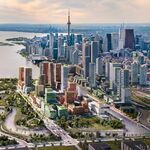crs1026
Superstar
Risk management, scope management, etc. always seem far too dependent on the skill of the PM rather than inherent to the organization. Cultural change is necessary.
Both TTC and ML have acknowledged that point to some degree. Both say they are building better project management organizations. I agree with you, effective project management is something that organizations only appreciate realistically after they have had something go bad. My own experience was in the Hydro sector, where there were plenty of notorious failures but also some unsung but justifiably proud success stories. External pressure to improve was slightly effective - there were plenty of firings and regime changes - but the real turning point was when the organization said to itself "we just have to do better" and recognized that project transparency was the only way that one could withstand the political gauntlet, and the proof had to be there.
On that scale, I would rank ML as "not there yet, wants good PM but still thinks that the right PR work can pull any embarassing booboos out of the fire" and VIA as "untested and naive about what project execution demands". So yes, the Bank may contribute positively. But I'm still hoping that these organizations get their internal act together. That's when the culture change sets in.
More to the point, what incentive is there for the government to build HSR (at a massive $20-30 billion for the whole QW corridor), to reduce ~200 movements a day. It would cost a fraction of that to make Pearson more efficient and gain some additional slot frequency.
Interesting comment.....the 200 slot statistic is when I actually began to think this might work. All HxR needs to suceed is to fill hourly trains going east and west from Toronto. If you take 200 airplane loads, even if only x% of those seats would switch to the right HxR connection, can you fill 2 coaches on each of 14 trains a day in each direction? Add in the passenger demand from existing VIA and some auto market switching to rail. That's a lot of seats, and the price point for the air travellers switching to rail is probably above the current rail revenue per seat. How much does a new runway cost vs x miles of HxR trackage?
- Paul




